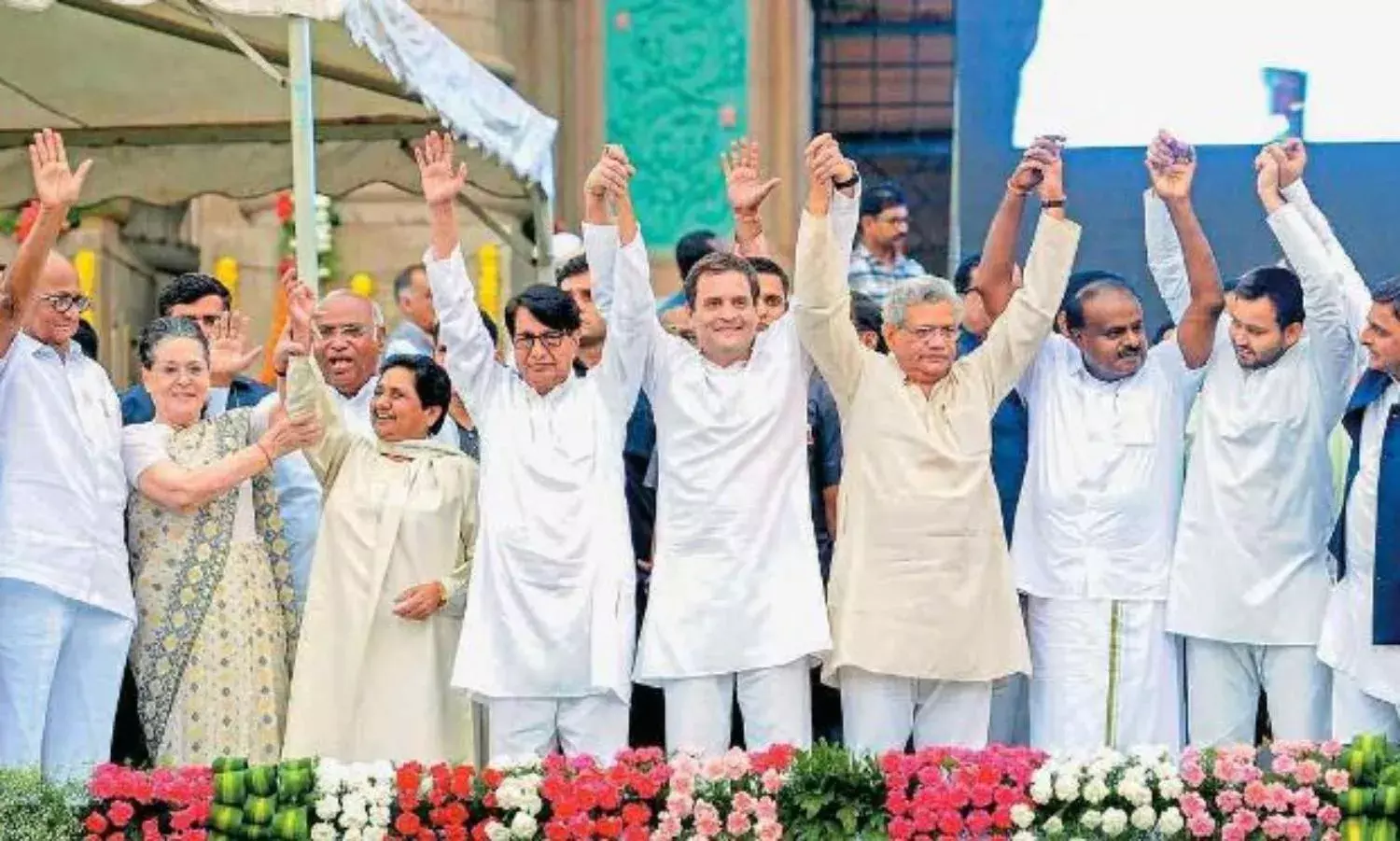The Myths and Facts About Coalition Governments
Has NSA Doval got it wrong?
NEW DELHI: A government with a decisive mandate is less vulnerable to the pulls and pressures a coalition faces and, hence, better placed to take tough, non-populist decisions in larger national interest, India’s National Security Advisor (NSA) Ajit Doval argued recently.
This is not a new line of argument – finding mention in any comparative analyses of majority and coalition governments – but merits scrutiny because it comes from no less a person than the NSA and at a time when a coalescing of opposition forces appears the most viable approach to countering the Bharatiya Janata Party’s (BJP) bid for power in the 2019 parliamentary elections.
Popular perception of coalitions in India tends to be colored by the short-lived governments of V P Singh (1989-90), Chandrashekhar (1990-91), H D Deve Gowda (1996-97) and I K Gujral (1997-98) and the allegedly high corruption that marked the Congress-led United Progressive Alliance’s (UPA) second stint in power (2009-14).
But the fact of the matter is that India has seen three full-term coalition governments between 1999-2014 (also, another between 1991-96 under Narasimha Rao) and majority governments have hardly had stellar records when it comes to checking corruption. Importantly, some of the most disruptive and far-reaching policy leaps the country has seen have been made by coalition governments.
V P Singh championed social engineering in moving ahead with the Mandal Commission recommendations seven years after they were made. The Narsimha Rao government reset Indian economic and foreign policy, ditching frameworks Rao’s own party had followed since Independence. The A B Vajpayee (1999-2004) government pursued disinvestment in earnest at a time when it was a dirty word. And under Manmohan Singh, UPA-I introduced game-changing social legislation. In almost every instance, the government and its leader moved ahead despite criticism not only from the opposition ranks but also from within.
What then explains this almost counter-intuitive risk-taking of coalition governments and the constraints that hold majority governments despite the power they are in a position to wield? For that, we must first turn to the two fundamental assumptions underlying the case for majority governments – and against coalition governments.
Assumption # 1: That a majority in terms of seats reflects popular endorsement and therefore confers on a seat-majority government the license to exercise its mandate in the manner it considers appropriate in national interest. As a corollary to this, it is also assumed that a majority government has national perspective, unlike a coalition one where sub-national or even sub-state and stakeholder group-specific considerations, though aggregated for government formation purposes, remain the primary drivers for decision-making.
Assumption # 2: That the only stakeholder group seeking to shape governance agendas and priorities with suspect motives and methods are elected public representatives. This is extended further to suggest that coalition governments, where multiple perspectives have to be reconciled, are structurally more vulnerable to corruption, while a majority government, where ideological cohesion is greater and party bonds are thick, is less amenable to it.
Both these assumptions are flawed. In a first-past-the-post (FPTP) voting system (which India follows), a majority in terms of seats does not necessarily reflect popular will. This is a known limitation of the FPTP system and the BJP was a ‘beneficiary’ of it in India’s 2014 parliamentary elections – winning over half the seats with only 31 percent of the popular vote. The Congress got less than a tenth of the seats even though it garnered a fifth of the popular vote.
Plus, the very existence of a seat-majority government is no guarantee of a national perspective, that is if national interest does not define itself in majoritarian terms and the idea of inclusion is salient to it (as it should be). On the contrary, coalition governments can be far more accommodative of various voices, given how dependent government survival can be on keeping partners’ social bases and electoral interests unharmed. Unsurprisingly then, some of the most repressive and autocratic regimes across the globe, both historically and presently, have been majority governments.
Further, members of parliament, whether from within a single party in government or belonging to various coalition partners, are by no means the only stakeholder group angling for state patronage and largesse. Caste, religion, linguistic, occupational and regional groups operating beyond the electoral arena and crony capital continually negotiate their respective interests and governments, whether majority or coalition, remain susceptible to their inducements.
Also, political parties, particularly large ones that make it to power on their own, are not monolithic but coalitions of multiple interests themselves and ideological cohesion and party discipline are no assurance against interest-specific lobbying via underhand means.
In fact, majority governments, lacking the added layer of checks and balances that partners present in coalitions, can get deeply mired in corruption. To be accurate, coalition governments can be unclean too but to suggest that majority governments are necessary for corruption-free governance underestimates how pervasive corruption is and how embedded and potent its drivers are.
The alarm over ‘weak’ coalition governments and the belief that majority governments enjoy the legitimacy and muscle needed to engineer transformations is clearly grounded in questionable assumptions and casual if not mischievous readings of Indian politics – and introduce into the public space a specious voting consideration.
The complex ways in which power comes to be accumulated and exercised and its keenness to perpetuate itself should alert us to the prospects of brutal majoritarianism and high corruption that can accompany majority governments. That said, majority governments are not undesirable in themselves and coalitions do not come with pre-crafted halos. Suggesting that would be as problematic as suggesting the reverse!





